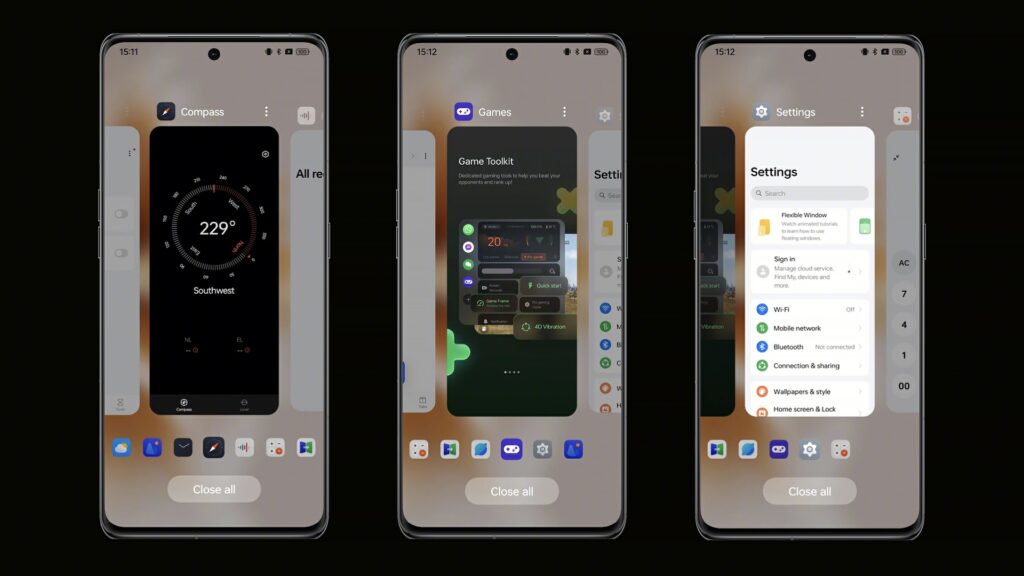- The Tech Powering ColorOS14 Trinity Engine, Smart Features, and the Future of AI Integration

As the landscape of computing evolves, so does the definition of performance. In recent years, there has been a shift in the way that people have come to perceive what truly defines top computing performance.
Whereas speed was previously seen as the be-all and end-all of computing capabilities, the question of stability and smoothness has steadily moved into the spotlight too.
Only by delivering consistent and smooth operations across all types of applications and scenarios is it possible for users to enjoy a real sense of fluency and efficiency. This is a principle that OPPO has embraced and exemplified through a decade of development with ColorOS.
Since its first development in 2014, OPPO has been working to perfect the balance between rapid responsiveness, rock-steady stability, and silky smoothness with each iteration of ColorOS. By constantly finding new ways to blend the best hardware with the most comprehensive and in-depth optimization of the underlying software.
‘Visible’ and ‘invisible’ smoothness
One of OPPO’s first breakthroughs in delivering the ultimate smooth user experience came with the release of UI First in early 2020.
By prioritizing active applications, UI First prevents background applications from over consuming system resources causing the drag down towards the overall performance. The result is a significant reduction in noticeable lag and the enhancement of what we call “visible smoothness.”
However, as computing resources were directed into supporting active applications, apps running in the background were being starved of resources and effectively killed. This in turn caused delays when switching between those apps.
Meanwhile, the widespread adoption of 5G increased the consumption of high-data media, entering the so-called “rich media” era, has placed additional processing pressure on the system. To address this ‘invisible’ smoothness issues, OPPO began optimizing ColorOS for better temperature control, stable battery life, and a more continuous and uninterrupted experience.
Continuously ColorOS improved memory compression technology to save more memory space for users, and breakpoint reading technology to ensure a more continuous and uninterrupted experience. With the latest release of ColorOS14, it has upgraded technologies in the OS’s Trinity Engine make it possible for the phone to run as many as 27 applications on the back end for up to 72 hours.
These innovations enable ColorOS to make the most of any given smartphone hardware and deliver the best results when it comes to traditional stats used for measuring smooth performance, such as app launch speeds, game frame rates, and more. Thanks to hardware scheduling capabilities like these, ColorOS now consistently ranks among the top performers in major industry benchmarks.
More human, more consistent
As OPPO’s engineers continued to push the boundaries of smoothness and ColorOS received increasing recognition from tech authorities with its top benchmark scores, the team gradually came to realize that high performance and ultimate speed do not necessarily translate into a more comfortable and “smoother” user experience in all scenarios.
With the brand-new Aquamorphic Effects in ColorOS14, it showcases how this insight has been put into practice. Contrary to what might be expected, the animations of these new effects have actually been optimized by reducing the speed from 380 milliseconds to a more user-friendly 750 milliseconds. By refining the dynamic effect logic in ColorOS14, every interaction has been made more intuitive and fluid.
Read Also: OPPO Reno11 Pro Parking ColorOS14, Now in Kenya to Retail for Sh86,000
Through Human Factor Analysis, OPPO learned that the human eye can only detect changes at intervals of about 100-150 milliseconds or more. If changes occur in less than 100 milliseconds, most people simply cannot tell the difference. This means that, even if the hardware is capable of doing so, there is no reason to engineer system response times as low as 50 milliseconds.
In order to provide this level of consistently smooth experience throughout the operating life of our mobile devices, OPPO has introduced Human Factors Analysis into multiple aspects of ColorOS. One of the decisions that came from this was to set the response speed of application launches to 135 milliseconds.

Through millions of repeated tests, we also identified and solved extremely low-likelihood consistency issues in areas like touch feedback, software concurrency, display delay, and more. The result is a consistent response time in the 100-150 millisecond range for all aspects of the UI with no perceivable fluctuations.
Embracing the possibilities of AI-generated content
Looking towards the future of smartphone and operating system experiences, the ColorOS team is mindful that the integration of AIGC (AI-generated content) is likely to place a high demand on mobile system resources, covering everything from memory and processing capabilities to battery life.
Right now, OPPO is exploring and experimenting in related capabilities, for instance, on how to optimize memory use and power management techniques to cope with such high demands.
ColorOS14 Trinity Engine exemplifies this forward-thinking approach with its advanced solutions for optimizing system smoothness and stability through fine-tuned management and scheduling of computing resources, memory, and storage at the microarchitecture instruction level.
The upgraded Trinity Engine contains three core technologies: ROM Vitalization, RAM Vitalization, and CPU Vitalization. ROM Vitalization frees up more memory space by compressing app data and merging duplicated files to address performance degradation issues caused by memory filling up over the long term.
RAM Vitalization works by reconstructing Android’s underlying RAM mechanism and employing specialized techniques to accelerate app launch speeds and improve the level of fluidity when switching between apps. Finally, CPU Vitalization uses a sophisticated computing power model that can precisely schedule power resources while determining the best balance between performance and power consumption.
Read Also: OPPO Reno11 Pro: Stylish Design With Next-Gen Ultra-Clear Portrait Camera
“After years of R&D upgrades and positive feedback from millions of users, ColorOS has reached a certain level of maturity today and is serving more than 600 million monthly active users worldwide. With the introduction of ColorOS14, it shows OPPO commitment to always provide unique experience to its users by breaking boundaries and tending to the unmet needs of smartphone users in order to further optimize the smooth and stable experience on OPPO devices,” said Fredrique Achieng, PR Manager, OPPO Kenya.
With the launch of OPPO’s newest Reno11 series, users can start experiencing the unmatched and smooth experience of ColorOs14 on the new Reno11 series available for purchase across all OPPO branded stores countrywide and online through OPPO Kenya website and e-commerce partners such as Jumia & Kilimall at *RRP Ksh67,999 for the Reno11 5G and *RRP Ksh85,999 for the Reno11 Pro 5G.


